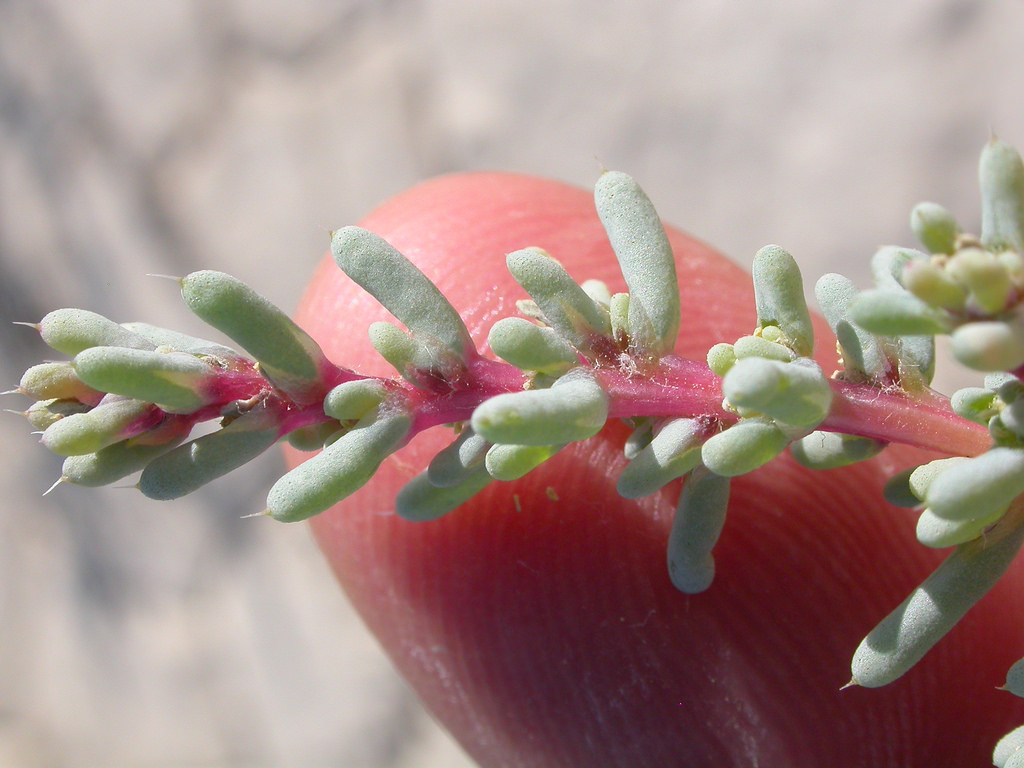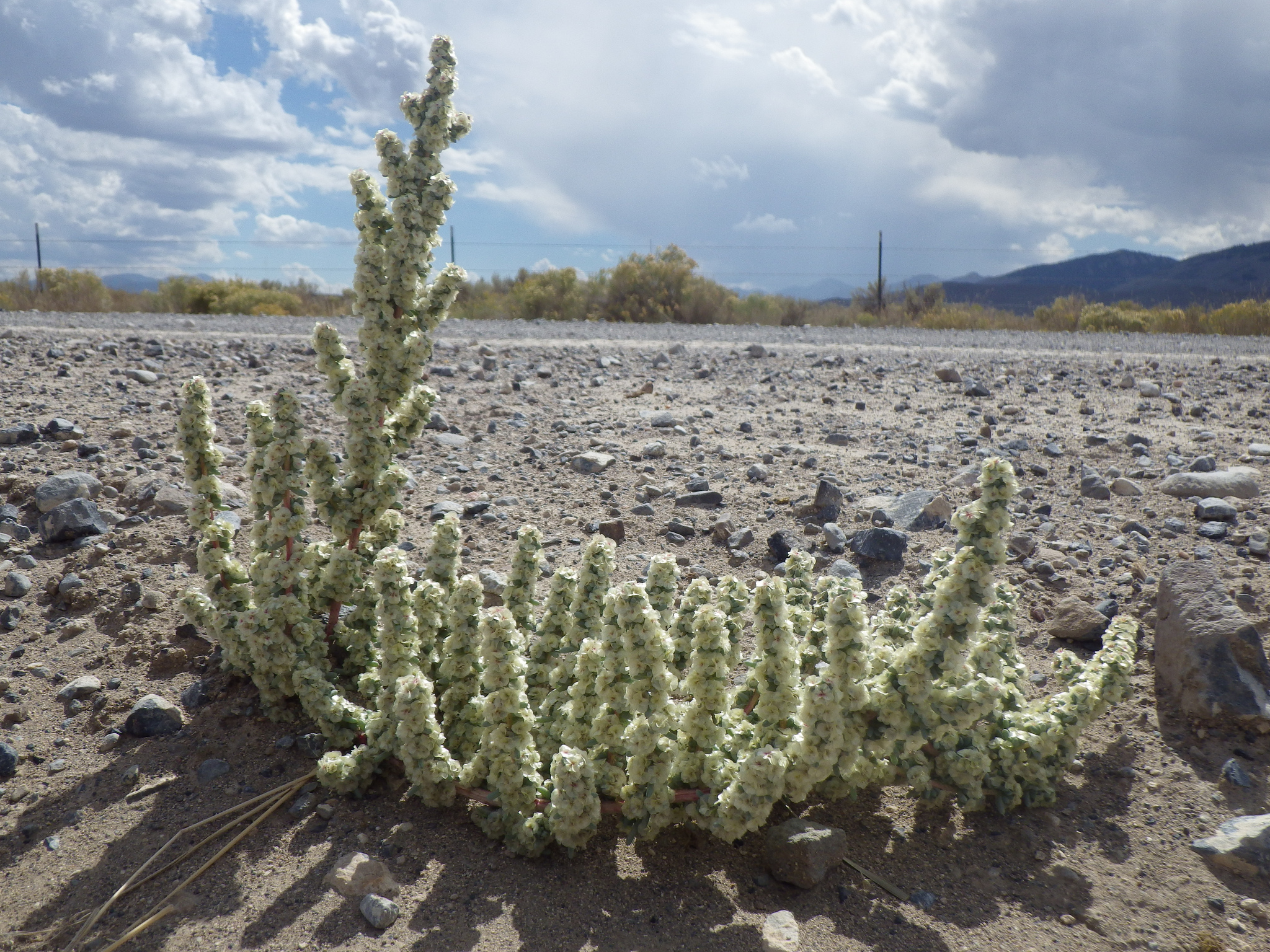Selected Plants of Navajo Rangelands
Halogeton

Halogeton is an undesireable weed on rangeland. It was introduced into North America in about 1930 and has rapidly spread.
In larger quantities, it is poisonous, and sheep are the most susceptible. It contains toxic amounts of sodium, potassium, and calcium oxalates. Signs of poisoning include: depression, weakness, reluctance to move, drooling, coma, and death. The first signs of poisoning occur 2 to 6 hours after an animal ingests a fatal amount, and death occurs in 9 to 11 hours.
Halogeton cannot compete with healthy range plants. Therefore, control involves keeping a healthy cover of desirable forage plants.


©2018 NMSU Board of Regents.
Individual photographers retain all rights to their images.
Partially funded by the
Western Sustainable
Agriculture Research and Education Program
(westernsare.org; 435.797.2257),
project EW15-023.
Programs and projects supported by Western SARE are
equally open to all people.